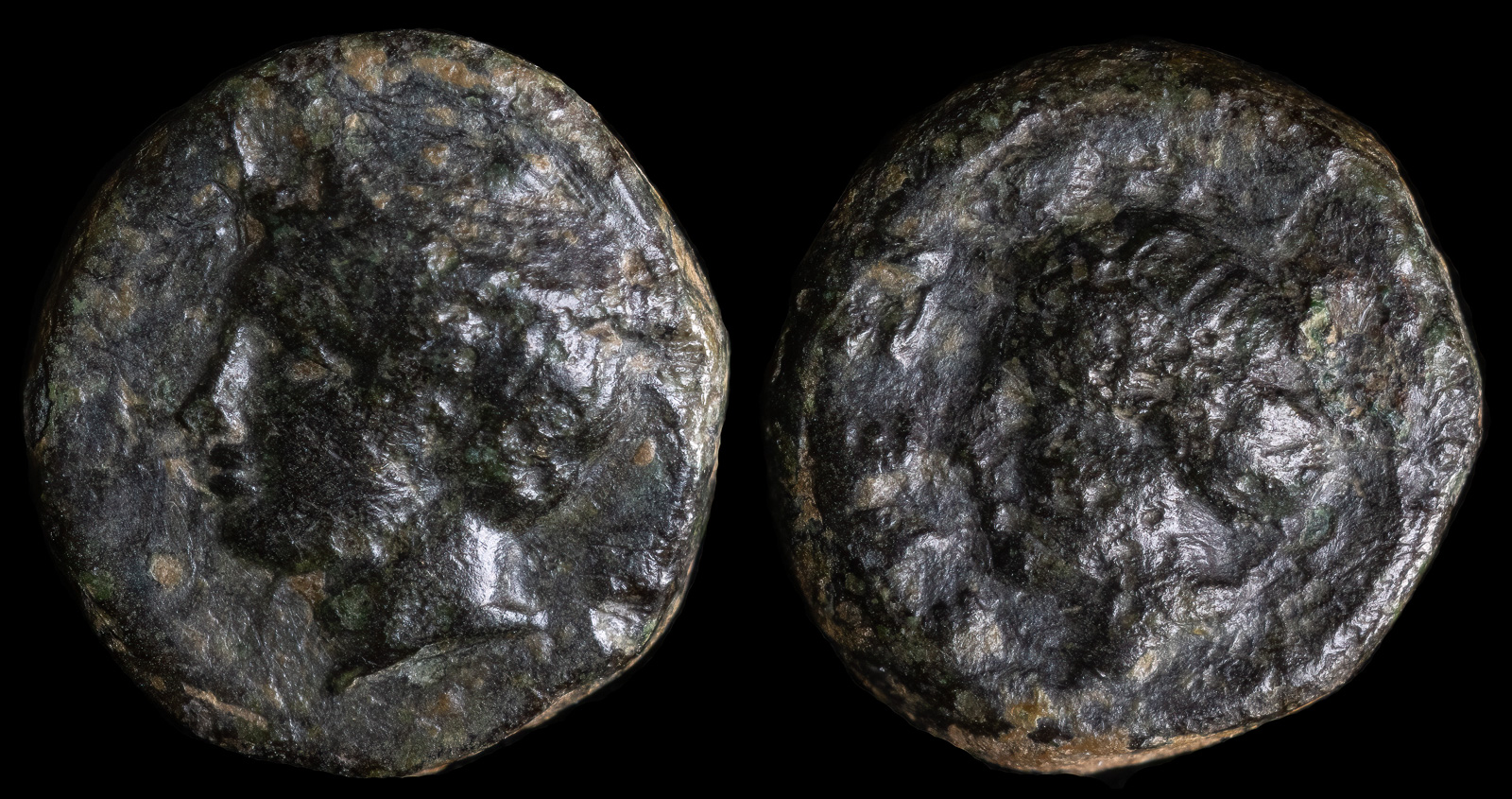
Lesbos. Eresos
circa 300-200 BCE
Æ 9 mm, 0,74 g
Head of Hermes to left, wearing petasos
Head of female right EPEΣI to left
Unpublished
Eresos was a city on Lesbos and was reputed to be the birthplace of the poet Sappho. In 334 BCE it was attacked and conquered by Memnon of Rhodes for the Persians, though he then died in an attempt on Mytilene.
The Persians setup several tyrants who caused all types of problems in Eresos and committed heinous acts, per an inscription that still survives. The next year, one of Alexander’s generals chased them out
Below is the common example from Eresos. I wouldn’t call it overly common since ACSearch lists only 33 results for all of Eresos, and 13 of those are this type. However, of the coins sold for Eresos – this is the most ubiquitous one and the condition is above average for the type. The general consensus is the obverse is of Hermes wearing a petasos.
Here is the first one that I won. On the obverse, it appears to be Hermes again with his petasos. However, the reverse is less clear since there are no other types I found from Eresos with two portraits. I did find one sold by CNG. The reverse of my coin does look similar to the obverse of theirs.
The reverse also resembles the obverse of my Pyrrha coin. Various attributions of the Pyrrha coin have mentioned Aphrodite or perhaps the ‘nymph Pyrrha’. I did wonder whether my coin is actually from Eresos, but the verbiage appears to clearly spell ‘Eresi’ – similar to CNG’s coin. Since I’d just finished a book about Sappho, I dreamed that it may be she (she is reputed to have come from Eresos) but I highly doubt that. It could be Aphrodite but we’ll probably never know.

Lesbos, Eresos
3rd-2nd century BCE
AE 9 mm, 0.64 g, 12 h
Head of Hermes to left, wearing petasos.
Rev. ΕΡΕΣΙ Grain ear.
BMC -, cf. 3 (bee on reverse). HGC 6 -, cf. 880-1 (bee on reverse)
Traditional founding of Eresos, likely as part of the Aeolian Greek colonization of Lesbos.
The poetess Sappho, born in Eresos, becomes active.
Eresos, Byzantion, Chios,Mytilene, Methymna, Rhodes, Thebes, Korkyra, Eretria, Kios, Samos, Naxos, Andros, Myrina (Lembos), Hephaistia, Imbros, and Thasos join the Second Athenian League, reaffirming its alliance with Athens in response to the growing threat of Persian interference and internal Greek conflicts.
Memnon of Rhodes uses a Persian fleet to secure Chios, then Antissa, Eresos, Mytilene, and Pyrrha.